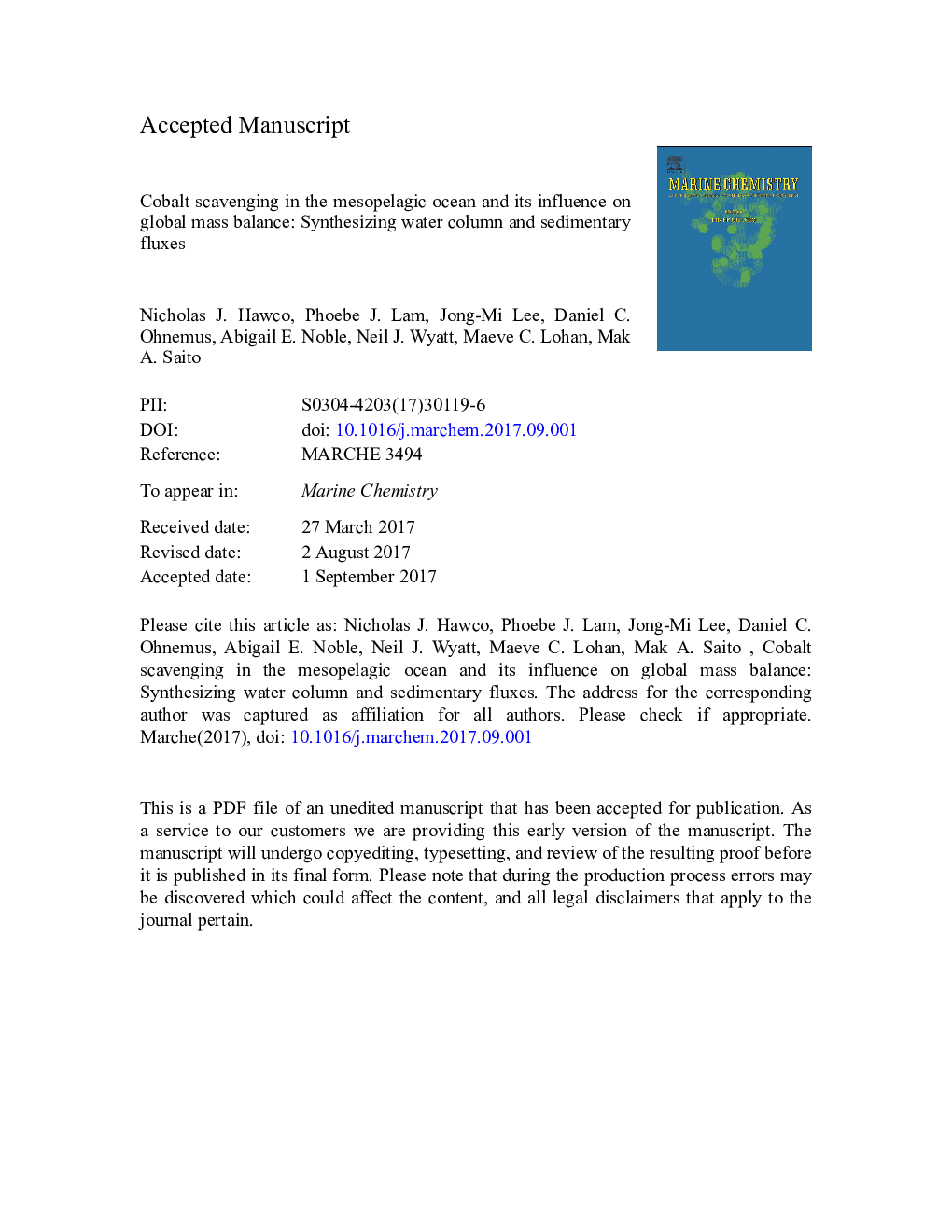| Article ID | Journal | Published Year | Pages | File Type |
|---|---|---|---|---|
| 7698856 | Marine Chemistry | 2018 | 61 Pages |
Abstract
In the ocean, dissolved cobalt is affected by both nutrient cycling and scavenging onto manganese oxides. The latter process concentrates Co in pelagic sediments, resulting in a small deep water inventory. While the flux of scavenged cobalt to sediments appears steady on timescales > 100,000 years, its residence time in the water column is short, approximately 130 years. Using results from recent GEOTRACES expeditions, we show net removal of dissolved Co from the deep ocean on the order of 0.043 pM yearâ 1, which corresponds to a turnover time of 980 years. Scavenging in deep ocean water masses is too slow to match cobalt accumulation rates in marine sediments, requiring most of the scavenging flux to derive from the mesopelagic ocean (< 1500 m depth) where nutrient cycling is active. Based on differences between the Co:P stoichiometry in particles sinking from the euphotic zone and dissolved Co:P remineralization ratios, we calculate areal scavenging rates in the North Atlantic and South Pacific basins on the order of 1.5 and 0.7 μmol mâ 2 yearâ 1, respectively, which agree with long-term accumulation rates in Atlantic and Pacific sediments. In both basins, over 50% of the scavenged flux of cobalt occurs in the upper 500 m, resulting in decadal turnover times in the mesopelagic. An assessment of sources suggests that the marine cobalt cycle is approximately in balance, but that this inventory may be sensitive to long term trends in the intensity of oxygen minimum zones, which account for ~ 25% of the annual cobalt source to the modern oceans.
Related Topics
Physical Sciences and Engineering
Chemistry
Chemistry (General)
Authors
Nicholas J. Hawco, Phoebe J. Lam, Jong-Mi Lee, Daniel C. Ohnemus, Abigail E. Noble, Neil J. Wyatt, Maeve C. Lohan, Mak A. Saito,
